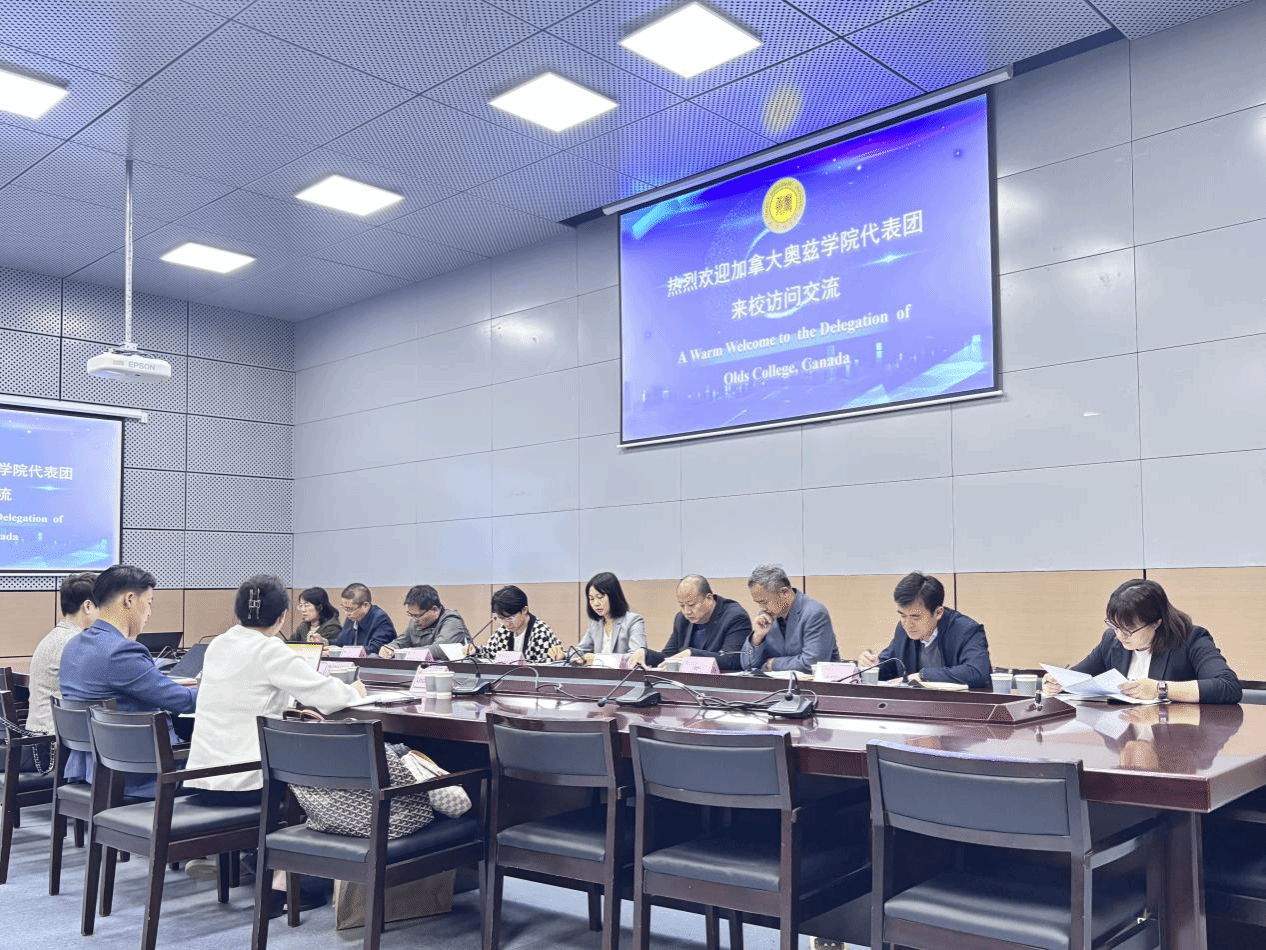On April 8th, Kay Lim, Director of International Cooperation and Admissions at Olds College in Canada, and her delegation visited our university to discuss and exchange ideas on the intercollegiate cooperation projects planned by the two schools. Officials from the International Office, College of Agriculture and Resource Environment, College of Horticulture and Landscape Architecture, College of Animal Science and Veterinary Medicine, College of Engineering and Technology, and College of Computer and Information Engineering of our university attended the meeting.

The Deputy Director of International office Fangjie welcomed the visit of the delegation from Olds College in Canada and provided a detailed introduction to the achievements of our university in international cooperation, technological innovation, and talent cultivation. And it is stated that the school has been committed to expanding international exchange and cooperation channels, actively exploring cooperation models with foreign universities, in order to cultivate high-quality talents with an international perspective. The visit of the delegation from Olds College in Canada provides a valuable opportunity for both sides to exchange and cooperate. It is hoped that through this in-depth exchange, the two sides can open up a deep cooperation mode in many fields such as scientific research cooperation and talent cultivation, work together, and promote the two universities to reach new heights in education and scientific research.
Kay Lim introduced the advanced experience and achievements of Olds College in agriculture and technology related majors in Canada. He stated that there are many similarities between the two schools in terms of disciplinary settings, educational concepts, and research directions, while each has its own advantages and characteristics, with broad cooperation space and complementary potential.
During the communication process, relevant officials from each college of our university and the delegation had in-depth discussions on professional advantages, teaching resources, etc. Both parties had a focused discussion on the feasibility, professional direction, and possible forms of cooperation for the student joint training program, including curriculum design, teaching mode, and faculty resources.
This exchange has laid the foundation for cooperation between the two universities and opened a new journey of friendly cooperation between our university and Canadian institutions. In the future, the two schools will jointly explore new models of international cooperation, promote the sharing and complementarity of educational resources, and provide a broader platform for our school to cultivate high-quality talents with international perspectives.
(From the International Office; Text: Qi Chen; Photography: Qi Chen)
